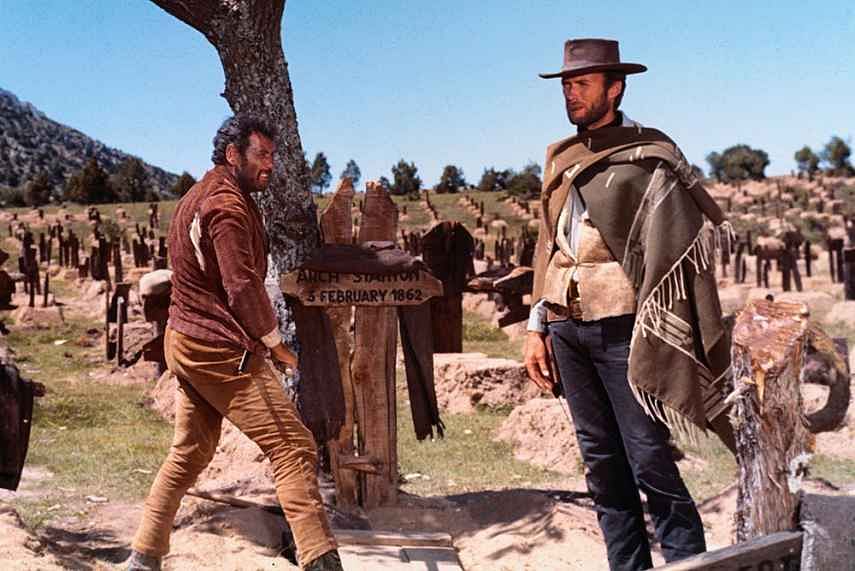
The most accurate thing one might say about the Western is that it is a genre of storytelling that has pretended to be America, to be that country during its making. Its pretence is that when the land was merely harsh and unforgiving, not yet a tight map of mean streets, there persisted in some white men a rugged little crux of personal integrity even as lawlessness and anomie raged around them and that the exceptional, natural, rough-hewn integrity of these men became America, that the distinctiveness of America was this integrity.
This is hokum, because it hides the powerful machinery of greed and glorifies the violence against people of other races that enforced this greed.
If the Western is pretence, then the Spaghetti Western, helmed by Italian directors like Sergio Leone, peopled by small-time European actors, and an American TV star named Clint Eastwood, and shot in the wastes of Almeria in Spain, is pretence and make-believe and a kind of hammy machismo squared.
The only one who wasn’t pretending in all this was the man who put together the music for the best of these films. Whether it is forsaking mere orchestral lushness for the simulated whistling, vulture calls, and cowboy imprecations of ‘Fistful of Dollars’, the bringing together of overly long-drawn bullet release sounds, jawing Jew’s harp, and grunts followed by a comic opera break into a galloping rhythm in ‘For a Few Dollars More’, or the synthesis of hooves, heigh-hos and coyote howls by ocarina and by other tinnier means in ‘The Good, the Bad, and the Ugly’.
Morricone’s work, whether in Leone’s films or elsewhere, seems to proceed from the need to make one point clear. About making a distinction between a professional and the artist, a producer of more than the obvious and the readily apparent. That he’s a composer, not a technician, nor a mere follower of instructions, nor indeed a mere underliner of what is already there. That being a composer is about being a kind of interpreter for the audience, that the music is the first interpretation that the viewer receives.
His music for non-genre films seems to focus on setting up another order of the temporal, another timeline, if you please, that runs alongside the immediacies of plot and story. On each occasion, the viewer will find in the music a line of commentary that lifts the story and positions it in relation to the archetypal, that pins events to a mythic stage where we may understand this story in relation to the urge that returns us to stories time and again. The music likewise draws lines across the screen, mapping characters and motivations without words or footnotes, but in subliminal ways. Multiple lines are thrown to the viewer as she watches these films, each a separate invitation to clamber aboard and know the story more intimately through a particular you-sized point of entry into the film.
In 1984, the music director M Ranga Rao paid an elaborate tribute in the Vishnuvardhan-Suhasini-starrer ‘Bandhana’. He must have just entered the field when the Italian maestro’s work for Leone’s films began drawing attention around the world. 20 years later, he picks up a phrase from the theme to ‘For a Few Dollars More’ and uses it for a moment where Suhasini’s artless laughter produces a stab of desire that turns into the elaborate stylings and outpourings of the song ‘Banna! Nanna Olavina Banna!’. The song completes the work of telling us that this love is an open wound, that this impossibly honourable man is vulnerable in the way that only loving unselfishly can cause. In Ranga Rao’s borrowing of a phrase written to show us that some men are scum for this moment, I find illuminating proof of Morricone’s genius for universality.